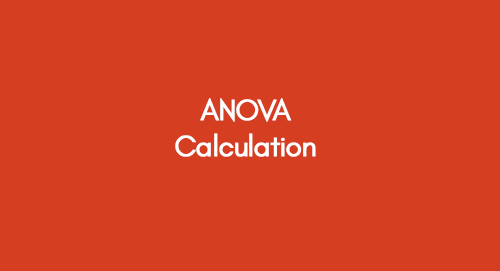
What is English Literature Dissertation? | Examples & Tips
June 2, 2023
What is ANOVA Calculation & How to Use It
June 6, 2023If you plan to complete your dissertation writing, you must structure your research before you begin. The entire research process requires defined techniques for data collecting and data analysis to answer the research questions.
Review Our Quality Dissertation Example
Review Our Prime Dissertation Topics
Making sure that your study follows a clear path to address the research question is the best course of action.
Example 1: Website Attributes on Consumer Buying Pattern: Amazon and eBay
Example 2: Strategic Analysis Report Case of Tesla Merger with Solar City
Note: Below is a complete guide with some more examples and tips for you to ace the skill of research paper writing.
What is Research Design?
A research design is a method for efficiently answering the study questions. It helps researchers to address their research questions or objectives systematically. The research design outlines the methods and procedures that will use to gather and analyse data, as well as the rationale behind those choices. Below are the key points for decision-making:
- Define the research question and objective that you are going to address
- Choosing a research design
- Selecting the sample according to your interest
- According to the research design, select the data collection & data analysis method
- Interpreting research data
A study design may need to be written up as a separate assignment or a component of another project, such as a bigger research proposal. In either situation, you should carefully assess which approaches are best and practical for resolving your quandary.
Step 1: Select the Type of Research Design
Step 2: Define your Aim & Approach for Research Design
Step 3: Select the Data Type for Your Desire Research
Step 4: Plan Your Data Collection Procedure
Step 5: Plan for Your Research Proposal
Step 6: Plan Your Data Analysis Strategies
Step 1: Select the Type of Research Design
Going to start professional writing, you should know how to design a research study according to its requirement. For this, you need to have a clear idea of what you want to research in the first place because your research question should be specific, measurable, and relevant to your field of study. Here are three common types of research designs:
Type of Quantitive Research Design
- Experimental design involves manipulating and controlling variables to establish cause-and-effect relationships.
- The descriptive design aims to describe and document the characteristics, behaviours, or phenomena of interest.
- Correlational design examines the relationship between variables without manipulating them.
Type of Qualitative Research Design
- Case studies to identify the research questions from a variety of sources, articles and methods.
- In grounded theory, qualitative data is analysed systematically.
- Phenomenology to describe the participant’s lived experience.
Step 2: Define your Aim & Approach for Research Design
Before going to start, you should be familiar with that how to design a research project to answer your research questions and how you will going to investigate them. The process which you are doing to opt to attain specific results. Methods to choose from will be quantitative or qualitative. Qualitative includes surveys, interviews, experiments, and case studies. But you need to choose the method that best suits your research question and the type of data you want to collect or otherwise pick secondary data which is already available.
Example;
A Research Question
A study that uses focus groups to understand the factors that contribute to teenage drug use.
There are various approaches to answering the research topic. What you choose will rely on the purpose and goals of your research. Here are two notable methods for answering the questions.
Qualitative Research | Quantitative Research |
Uses words and text to describe and understand a phenomenon. | Uses numbers and statistics to measure and analyse a phenomenon. |
Focuses on understanding the meaning of a phenomenon from the perspective of the participants. | Focuses on understanding the causes and effects of a phenomenon. |
Uses methods such as interviews, focus groups, and participant observation. | Uses methods such as surveys, experiments, and statistical analysis. |
It is important to note that qualitative research and quantitative research are not mutually exclusive. In many cases, a combination of both approaches is to gain a deeper understanding of a phenomenon. For example, conduct a survey to collect quantitative data about a population and then use interviews to collect qualitative data about the experiences of individual participants.
The choice of whether to use a qualitative or quantitative research approach will depend on the specific research question being asked, the resources available, and the time frame for the project.
Step 3: Select the Data Type for Your Desire Research
For designing a research project, you have chosen your research method; you need to create a plan for how you will collect your data. This plan should include details such as the sample size, the data collection tools you will use, and the procedures you will follow.
- Data collected by the researcher for the first time.
- Can be collected through a variety of methods, such as surveys, interviews, experiments, and observations.
- Provides original insights into the research topic.
- Can be time-consuming and expensive to collect.
Examples
- A survey of students about their attitudes towards school.
- An interview with a business owner about the challenges of running a small business.
- An experiment to test the effects of a new drug on depression.
- Data that has already been collected by someone else.
- Can be found in a variety of sources, such as government publications, academic journals, and online databases.
- Can save time and money, as the researcher does not need to collect the data themselves.
- May be outdated or inaccurate, as it is not always up-to-date.
Examples
- A government report on the state of the economy.
- An academic journal article on the effects of climate change on agriculture.
- An online database of company financial statements.
The choice of whether to use primary or secondary data will depend on the specific research question being asked, the resources available, and the time frame for the project.
Step 4: Plan Your Data Collection Procedure
The purpose of this data collection procedure is to outline the steps involved in gathering reliable and valid data for our research study. The study aims to investigate [research topic] and its impact on [specific variables]. By following a systematic approach, we will ensure the reliability and validity of our data while maintaining proper sampling procedures and effective data management.
Operationalisation
- Define Variables: Clearly define the variables of interest and their operational definitions. This step involves conceptualising the variables and transforming them into measurable indicators or constructs.
- Develop Measurement Instruments: Create measurement instruments, such as surveys, questionnaires, or observation protocols, to collect data on the identified variables. Ensure that these instruments are designed in a way that captures the essence of the constructs being studied.
Reliability and Validity
- Reliability: Implement measures to ensure the reliability of the data collected. This can be achieved by:
- Conducting a pilot study
- Establishing inter-rater reliability
- Applying consistency checks
- Validity: Take steps to enhance the validity of the data collected. This can be accomplished by:
- Ensuring face validity
- Establishing content validity
- Assessing construct validity
Sampling Procedure
Calculate the required sample size based on statistical considerations such as the desired level of confidence and margin of error. Aim for an adequate sample size to ensure representative and generalisable findings.
Use the selected sampling technique to recruit participants from the defined target population. Employ various methods such as online surveys, in-person interviews, or random digit dialling, depending on the nature of the study and the availability of resources.
Data Management
- Data Collection: Administer the measurement instruments to the participants following standardised protocols. Ensure consistency in data collection procedures across different data collectors, if applicable.
- Data Entry and Cleaning: Transfer the collected data into a secure and reliable database. Perform thorough data cleaning processes to check for errors, missing values, and outliers.
- Data Storage and Security: Store the collected data in a secure and accessible location, following ethical guidelines and legal requirements. Implement appropriate security measures to protect participant confidentiality and ensure compliance with data protection regulations.
- Data Analysis: Utilize appropriate statistical techniques and analytical tools to analyse the collected data, ensuring transparency and replicability of the analysis process.
Step 5: Plan for Your Research Proposal
For the research, you have to know how to design a study for writing a proposal. Because it organises how the study will be carried out, the research design is a crucial part of a research proposal. You can discuss it with the research professor, who will assess whether the findings and conclusions are viable and credible.
Write a Proposal for a Project? Expert Tips and Techniques
If you have already developed your study design, review our instructions for writing a research proposal. Due to the fact that you are creating your proposal before conducting research, the research proposal is written in the future tense.
Step 6: Plan Your Data Analysis Strategies
Your data analysis methodologies must be explicit while designing a research study. Here are some additional tactics that your research suggests are necessary.
Quantitative Data Analysis
For the quantitative data collected through the survey, use descriptive statistics to summarise the data and inferential statistics to test hypotheses about the relationships between variables. Qualitative Data Analysis
The qualitative data collected through the interviews will use thematic analysis to identify patterns and themes in the data. And also use a coding scheme to organise the data and identify key concepts.
Mixed-Methods Data Analysis
A mixed-methods approach to data analysis, which involves combining quantitative and qualitative data. To get a more comprehensive understanding of the impact of any research approach.
Data Analysis Challenges
Use efficient data management techniques to keep track of the data and to ensure that it is accurate. Need to carefully consider the potential sources of bias and take steps to minimise their impact on my analysis.
Conclusion
Following the guide on how to write a study design helps to plan and carry out well-structured research for your project. The possibility of achieving trustworthy results is increased, and a thoroughly thought-out research strategy increases the credibility of the study findings. Researchers can safely begin their academic or professional pursuits, producing new information and developing their respective professions with a solid foundation in research design.
Get 3+ Free Dissertation Topics within 24 hours?



























